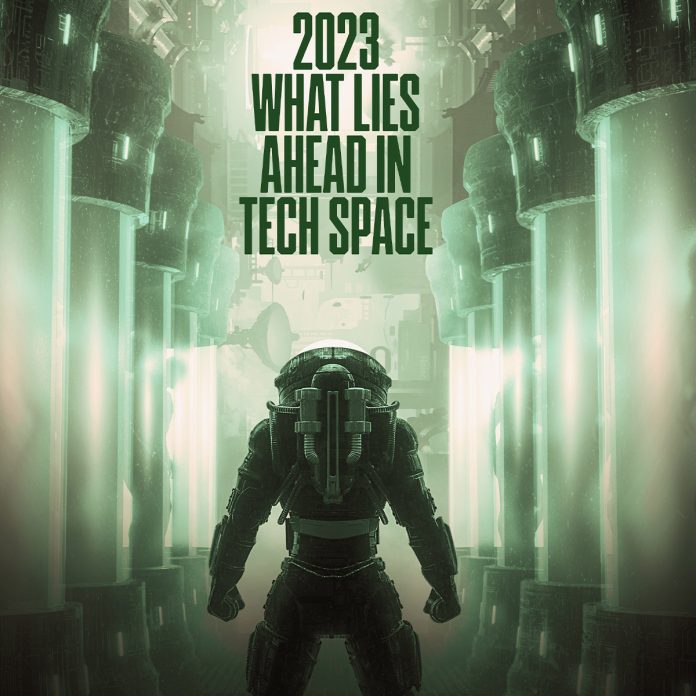Every day is a new day in the fast-moving world of technology, but a yearly summary helps focus on what the 30,000 feet view represents in general, across multiple spaces and how tech will impact us as we move forward. I am no soothsayer, but as an aspiring futurist, here are my top 7 predictions for the year 2023 (in no particular order).
1. IoT To Be Everywhere
The world today is ever-connected, and that is only expected to increase. While 5G rollouts started in 2019 in many parts of the world, it has slowly started to gain critical mass across select parts of the world. Some countries now have their largest cities mostly covered and smaller countries are planning their rollouts as well, which will in turn create more demand for 5G modems, reducing their costs. This means that as the year progresses, higher speeds at lower latencies will be available across greater parts of countries.
Combined with BLE (Bluetooth Low Energy) becoming more pervasive, we can expect to see a faster-growing interconnected space with many devices having their own sims via 4 & 5G for higher bandwidth tasks in open spaces, with Bluetooth for lower bandwidth signals (think AirTags) and faster, smaller WiFi devices in closed spaces to enable devices to be much smarter and connected. With these 3 forms of connectivity across devices, growth in connected devices is expected to increase much more significantly in 2023.
2. AI will Grow by Leaps and Bounds
Generative AI is AI that steps away from the standard prediction-based modelling that we have come to see in creating content, images, etc. Towards the end of 2022, we all heard of ChatGPT, which has opened the doors to new types of content creation in the text format, but earlier in 2022, we also saw AI-based image generators and image enhancers take flight. We have seen the ugly side of this in the form of DeepFakes.
Generative AI’s strength comes from much better machine learning models AND faster, cheaper computing. These two will only naturally increase the power of what we consider non-generative AI, aka predictive AI. Naturally, this will also strengthen the presence of prescriptive analytics and bring AI and Machine Learning into the prescriptive space.
3. The Rise of Quantum Computing
Like many buzzwords, this has not gained much popularity, at least not publicly. The power of quantum computing, on the other hand, is anything but unimportant. Quantum computing is, in a way, still experimental; however, there are already several key use cases lined up after taking into account the success seen in some of the experiments. IBM has plans to offer quantum computing within 2023, Microsoft already has some offerings in the Azure platform and Google is working fast and is expected to join the ranks soon. Limitations notwithstanding, this is going to be an interesting space to look at.
4. Editing DNA
At the moment, DNA is actually no longer experimental. If you’ve been looking at CRISPR, editing genes is very real. The work is expected to be more concrete going forward with techniques used for editing coming into the finalization stage. Imagine gene editing that’s as simple as editing a document. Removing some parts and replacing them with others or letting the natural DNA repair process takes over. Could be the stuff of horror movies and world changing tech at the same time, depending on what you are looking at.
5. Sustainable Energy Sources
Energy is considered to be the highest contributor to greenhouse gases and countries around the world are shifting their power sources to safer, more sustainable means that don’t play havoc with the planet’s health. The cost of solar panels continues to drop, albeit slowly and efficiency has increased with better battery technologies to help manage storage as well.
While electric cars are all the rage for their emission-free nature, carbon is still being pumped into the air; this time by bigger, more efficient power plants and some balance between thermal and sustainable sources. There has been an interesting development in the liquid fuel space with e-fuel produced through carbon dioxide harvested from the air and converted to methane (natural gas) using solar power. This makes cars run on the same internal combustion engine, except technically making the process carbon-neutral.
Small surprise: During late 2022, there was a significant breakthrough in nuclear fusion where a reactor produced more power than it was provided. This could be the start of something new!
6. Cybersecurity will Become More Important
As the world continues to digitize at a rate faster than ever before, the risks it faces are also significant. In 2022, several major companies and internet-based platforms faced threats and challenges in the digital security sphere, including Twitter, Revolut, Optus, Uber, and Shein, amongst others. Even the password protection giant ‘LastPass’ was attacked at least thrice in the same year, with the last attack in December 2022 affecting actual users’ password vaults.
7. Digital Twins
You may or may not have heard of this one, but with high-scale, high-speed computing on the cheap, the corporate world has adopted a process for testing scenarios through what they call digital twins. These are software simulations of either actual real-world devices to see how they react in different environments and/or stress factors that allow business leaders and analysts to pick and identify strengths and flaws behind a new material, a new process or even a new facility at a fraction of the cost of building a real one.

